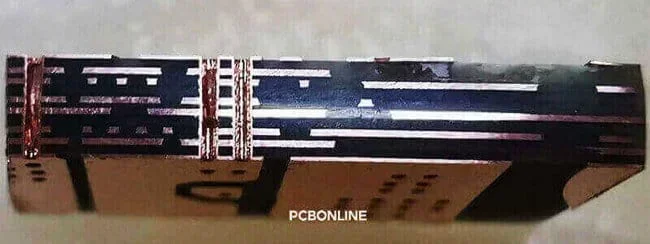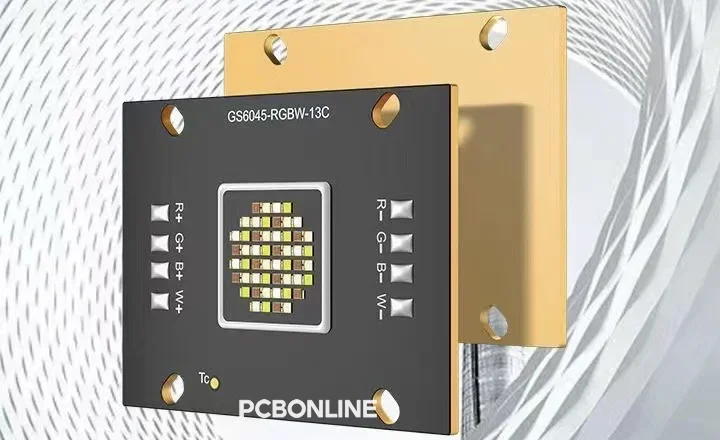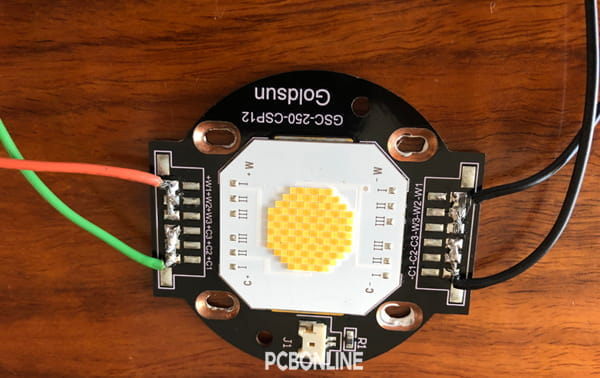Aluminum PCBs are common insulated metal substrate PCBs (IMSPCB) widely used for LED lights, automotive lighting, and other high thermal conductivity applications. The thermal conductivity of aluminum PCBs is usually 1W/mK or 2W/mK. If an aluminum PCB's thermal conductivity can't satisfy your expected application requirements, why not consider copper-based PCBs?
Copper-base PCBs have better thermal conductivity than aluminum PCBs and provide you with much more design possibilities.
Part 1: What is a Copper Base PCB

A copper base PCB is a metal core PCB with a copper substrate. If a hybrid PCB whose substrate is a copper plate inlay in the FR4 board, it is also a copper base PCB.
Usually, copper-base PCBs have the same structure as aluminum PCBs - single-layer, double-layer with single component-mounting side, double-layer with dual component-mounting sides, and four-layer with dual component-mounting sides. Even they use the same prepreg material to insulate the copper layers. However, the copper substrate (398W/mK) has better thermal conductivity than the aluminum substrate (237W/mK).
What's more, there's thermoelectric separation technology (also called direct touch technology) for copper-base PCBs. It means by solder mask opening and electroplating copper to increase the copper thickness of required positions, the heat conducts directly from the LEDs or other components to the copper base, while the circuit network is independent of the thermal network.
![]()
The thermoelectric separation technology greatly enhances the copper-base PCBs' performances in thermal management. Thermoelectric separation copper-base PCBs can serve high-power applications with an extremely long lifespan.
Copper-base PCBs can be designed and fabricated with the circuit layer number from 1 to 8. They can be high-density and hybrid laminated with different materials such as FR4, aluminum nitride, and aluminum oxide (from the supplier PCBONLINE it is so).
Part 2: What is the Thermal Conductivity of Copper Base PCBs
The prominent feature of a copper-based PCB is its excellent thermal conductivity.
Regular copper-base PCBs' thermal conductivity ranges from 1W/mK to 9W/mK, and is generally several to dozens of times the aluminum PCBs'. For a thermal management PCB, the prepreg's thermal conductivity is more than 3W/mK, and overall, the copper-base PCB's thermal conductivity is about 5W/mK to 9W/mK.
Thermoelectric separation copper-base PCBs' thermal conductivity is almost 398W/mK. This is because the pad touches the copper base directly without prepreg layers between them.

Although the thermal conductivity of a copper base PCB is dozens of times higher than an aluminum PCB, it's much cheaper than a ceramic PCB. For this reason, a copper PCB is the preferred thermal conductive circuit board for many high-power LED lights. And making the chip-on-board (COB) LED packaging on copper-base PCBs is the first choice of many clients.
Part 3: Copper Base PCB Fabrication and Assembly
Copper-base PCB fabrication and assembly can be completed by the one-stop advanced PCB manufacturer PCBONLINE.

PCBONLINE manufactures regular copper-base PCBs and thermoelectric separation copper-base PCBs from its PCB manufacturing bases in Jiangsu and Jiangxi. And it assembles copper-base PCBs in its PCB assembly factory in Shenzhen.
You can check out the copper base PCB fabrication capabilities of PCBONLINE below.
- Regular copper-base PCB: 1 to 4 layer
- Thermoelectric separation copper-base PCB: 1 to 8 layer
- Component-mounting side: single-sided and double-sided
- Finished copper core PCB thickness: 0.5mm to 5.0mm
- Copper core PCB size: 5mm × 5mm to 1200mm × 480mm
- Copper circuit thickness: 35μm, 70μm, 105μm, 140μm, 175μm, 210μm, 245μm, 280μm, 315μm, 350μm
- PCB via wall copper thickness: 20μm to 35μm
- Minimum trace width/space: 0.1mm/0.1mm
- Minimum punching hole aperture: 1.0mm
- PCB routing tolerance: CNC routing: ±0.1mm, punching: ±0.1mm
- Minimum drill bit diameter: 0.6mm
And here are the copper-base PCB assembly capabilities from PCBONLINE:
- PCB thickness: 0.3mm to 4mm
- Minimum SMD footprint: 01005
- All electronic component sourcing period: 15 days to 3 weeks
- Reflow soldering: lead-free reflow soldering and nitrogen reflow
- Wave soldering: wave soldering with jigs and selective soldering
- LED COB bonding on LED plates: wire bonding and flip-chip bonding
- Inspections during PCB assembly: solder paste inspection, x-ray inspection, on-line AOI, visual inspections
- Services in PCB-assembly post stage: functional testing, conformal coating, IC programming, thermal aging, and box-build assembly
PCBONLINE provides free design for PCB manufacturing (DfM), design for PCB assembly (DfA), and design for box-build excellence (DfX). For copper-base PCB fabrication and assembly, please feel free to send your Gerber and BOM to info@pcbonline.com to get a quote. If you don't have a PCB design yet, this EMS manufacturer can also provide you with helpful suggestions for your project for free.
Part 4: Applications of Copper-Base PCBs
Copper base PCBs are used for high-power applications, applications in areas with large temperature differences, and heat dissipation for precision communication equipment. And some applications of copper-base PCBs are:
- LED lights: copper-base PCBs can be used for LED lights, especially COB LED lights. COB LEDs can be bonded to the LED plates by gold wires or solder balls from PCBONLINE, and then the LED module is surface-mounted on the copper-base PCB to make the LED lights.
- Automotive lighting: double component-mounting-sided copper-base PCBs can be used for the headlight of vehicles. The double-sided copper-base PCB provides high efficiency, excellent heat dissipation, and a superior spotlight effect. Both regular copper-base PCBs and thermoelectric separation PCBs can serve automotive lights.

- Charging piles for electric vehicles: copper-base PCBs can be used for the charging piles for EVs and HEVs. For example, the adaptor board in the high-power charging pile is a copper/FR4 hybrid PCB. For reliability and safety, in the PCB design, large-current circuits and small-current circuits are separated. The copper plate areas conduct large currents and dissipate heat, and the FR4 areas conduct small currents and signals.
Conclusion
Copper-based PCBs have good thermal conductivity and are used for high-power devices and systems. There are regular copper-base PCBs with 1W/mK to 9W/mK thermal conductivity, and thermoelectric separation copper-base PCBs with 398W/mK thermal conductivity. For copper-base PCB fabrication and assembly, you can consider the one-stop manufacturer PCBONLINE, who can manufacture from prototype to bulk production and offer you cost-effective and quality fabrication.
© This article is an original work of the PCBONLINE team. Please indicate the author PCBONLINE if you reprint. If the article is reproduced without permission or indicating the author's source, PCBONLINE reserves the right to investigate the infringement.




